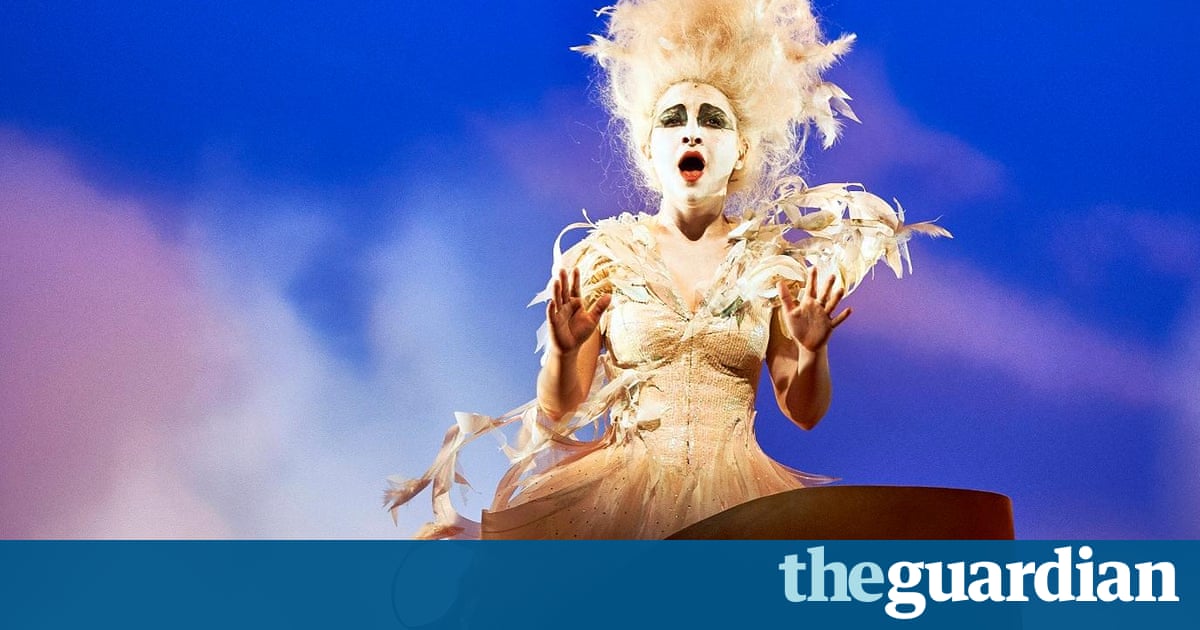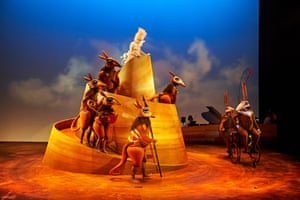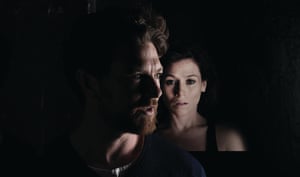I love theatre and I’m blind. Here’s how that works | Ria Adriani

Ria Andriani became blind at the age of five as the result of glaucoma. Thanks to tactile tours and audio descriptors, it hasn’t stopped her enjoying theatre.

The Rabbits, written by Kate Miller-Heidke and adapted from a picture book by John Marsden and Shaun Tan, was one of the most popular shows to run at this years Sydney festival. The production, which debuted at Perth international arts festival in 2015, promised to bring the book to life with spectacular staging and costumes that would bring a third dimension to Tans illustrations and characters. Everybody raved about it. Guardian Australia gave it a five-star review.
There was only one snag: I would never be able to see it.
Live theatre is an experience most enjoy, but for those who are blind or have low vision, the gap left by the visual information taken for granted by sighted people can be extremely frustrating.
I lost my sight at the age of five as the result of glaucoma. As a musician and writer, I have a particular interest in theatre and have welcomed the increase in audio-described theatre available in Australia. With descriptions, people like me can engage with and sometimes get lost in the work on stage. Sometimes were backstage before a show begins, touching the props and costumes.
I wouldnt be able to see The Rabbits, but on 21 January late in the season I was able to enjoy it.

The Rabbits is an allegorical tale of colonisation told from both sides as a group of marsupials (described as numbat-like creatures) have their world invaded by the arrival of the rabbits. The tactile tour organised by Sydney festival was led by the stage manager, Mark, who guided a group of us as we touched and held some of what would be appearing on stage.
Mark showed us a long pole with a flag on one end and a gun on the other which the rabbits planted on the ground to mark their territories. We felt the rabbit captains costume too: a gargantuan top hat with brass studs, gold medallion and trim. Around the sides were plastic clockwork cogs; the 17th century navy coat was transformed to a stiff boat-shaped contraption around the torso, complete with trimmings and gold buttons. The preshow notes, which are given to vision-impaired people before the show, explained the black coat was full of white indecipherable calligraphy, just like the illustration in the book.
The marsupials costumes were softer, more comfortable two-pieces which could be zippered like a coat and trousers. Last, Mark passed around a baby the shows most important element. It felt like a soft toy animal and had a long tail that fitted snugly around the neck. The end of the tail had a small hook to attach it to kites as they flew out of the reach of the marsupial mothers.
During the performance I listened through an earpiece as an audio describer talked me through what was happening on stage the movement of the actors, the changes of scene, any other visual cues that were important to the show. Audio describers are usually volunteers trained by Vision Australia, who I work with sometimes; they prepare the preshow notes, and with meticulous timing, feed in the information during gaps between dialogue.
Michael Ward is the national coordinator of audio description at Vision Australia. The service, he says, enables people who are blind or have low vision to access the rich elements on offer onstage, helping them be more in the moment than they are when they have to do the extra work of deciphering as well as listening. It also helps place scenes in context and ensures you are not the only one in the room not laughing at the sight gag, he says.
Belvoir St Theatres production of Stephen Sewells The Blind Giant is Dancing was audio-described on 12 March, but I attended an earlier performance too. I was struck by how different the play was the second time around.

Without audio description, the core interest was the dialogue between the main characters: an enraged progressive (Alan played by Dan Spielman), a stubborn feminist (his wife Louise played by his real-life partner Yael Stone), sinister journalist Rose and a controlling magnate. One of the first scenes features an argument between Alan and Louise, and at first, I sided with Alan, in the throes of a midlife crisis with Louise just not listening to him. But with audio description, I learned that Louise kept coming to Alans side during their fight, trying to hold him before being rebuffed. I sympathised more with her that time.
With audio description, movement on stage becomes part of the drama instead of just background noise. In Belvoirs production of Blind Giant, the sets changed rapidly with little sound; the seeing audience was notified of the move by a flashing screen of text that dominated the stage. Alan could be at home, at his workplace or at a bar having a drink with Rose. Without description, all I got was a jumble of loosely connected chatter with few clues from the script or accompanying sounds. I had to guess where scenes were set the local council? The Labour party campaign office? Alans office? And where did Alan work? The Institute of Applied Economics in Redfern was stated numerous times on the screen but no one on stage mentioned it.
Knowing it was in Redfern upon second viewing, I could picture some of the local bars where Alan would meet with Rose. We were told the names of each character as they appeared on stage, too helpful when actors are playing more than one character.
Jill Gavin, the audio describer for The Blind Giant is Dancing, explained her preparation: I watch the play three times, once in the audience and twice more in a separate space. At Belvoir the audio describers sit in the green room and watch the show on a video feed.
Gavin uses the scripted stage direction and directors comments to write preshow notes and fills in the rest with extra information, such as what individual characters look like, what they wear and what they are doing in the spaces between the script. By summarising the scenes one or two pages in advance, Gavin can time her description on cue. This is important: a description must be to the point and not superfluous.
As a blind theatregoer, knowing the context and physical detail of the performance makes a great deal of difference to our experience. Tactile tour and audio description services add new layers of information and help us appreciate the complexity of live performance and the richness of our local creative culture. At present these services are mostly confined to major arts companies with well-established procedures in place. But for true accessibility, audio description should be part of every performance.
Read more: https://www.theguardian.com/stage/2016/sep/10/i-love-theatre-and-im-blind-heres-how-that-works